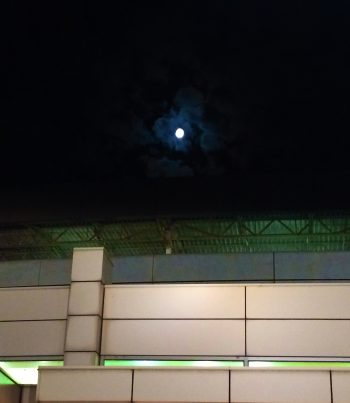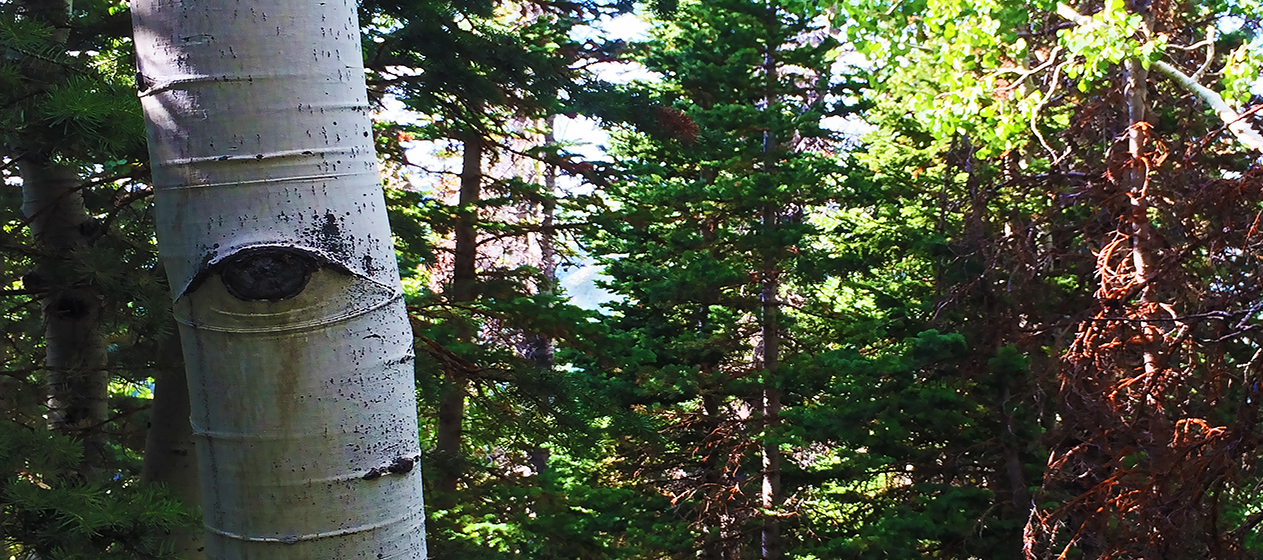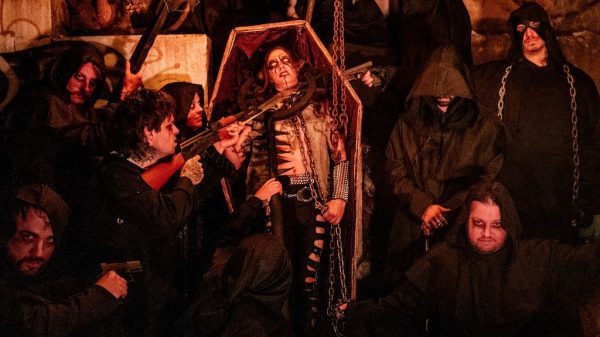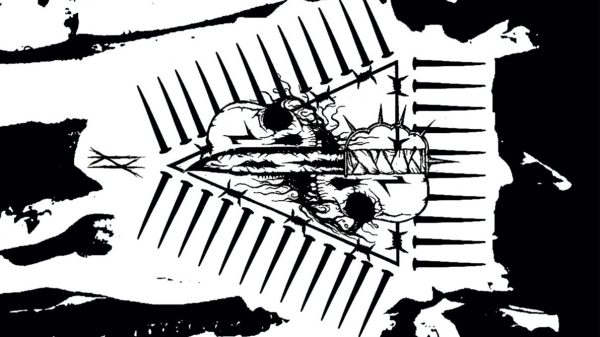Black metal is a genre artistically replete with a fixation on the natural world. Trees, rivers, mountains, and the moon populate album artwork. Black metal’s concern for the environment is not simply one of aesthetic appreciation; it comes bundled with a worldview that is inescapably sociopolitical – an ecofeminist perspective – despite many bands’ attempts to remove their music from a political context. Music has long functioned as both a form of escapism and an expression of rebellion, and black metal is a fertile new form of the latter. The 21st century has been a narrative of increasing corporate power across the world, and with that comes an increasing awareness of its oppressive effects on every dimension of life. Feminism is popularly thought of as a social movement only critiquing oppressive gender relations within the framework of a given society; ecofeminism seeks to examine every facet of these frameworks – from economics, to social structures, and social psychology. It and black metal share the view that society’s malfunctions can be traced back to humanity’s – and historically men’s – obsessive need to control everything that appears to be controllable. Despite its inception as misanthropic escapism, black metal is now socially functioning as confrontational humanism.
The latter half of this decade was rife with new ears finding black metal, and unlikely venues and publications showcasing the genre, thanks to a host of bands taking the genre in directions untrodden at those respective points. This is mainly taking place in America, where we see bands like Panopticon and Botanist enacting a unique take on black metal, worthy of the American Transcendentalist tradition of nature worship. Panopticon’s approach on later releases isn’t dark so much as it is furious; but it’s an arguably transcendental anger, one infused with themes of nature, which comes across in brighter, airy, melodic parts, and musically progressive elements that push the genre forward. The most recent Botanist release takes black metal into new territories via the unconventional use of hammered dulcimer and harmonium in metal. These bands cross previous boundaries to provide examples of black metal’s potential for growth, and this growing mainstream acceptance is representative of the universal power and potential black metal possesses.
 The aforementioned bands could be taken as the progenitors of a larger “post-black metal” movement. These acts are certifiably different from more traditional black metal artists; there tends to be an absence of a Satanic/occult agenda, and the atmospheres tend to explore darkness through the lens of more than just depravity, and sometimes these works of post-black metal aren’t dark at all. Yet they use the familiar sonic tropes of black metal to escalate the singular, perpetual intensity the style is known for into untouched territories. At the core of this innovation in black metal is its most important characteristic: its power as a primitive energy, a conduit of nature, which serves as a vehicle for existential revelation and a de-occultification of the gnostic catharsis that black metal has kept shrouded to itself through the subcultural in-joke of “trve kvlt”.
The aforementioned bands could be taken as the progenitors of a larger “post-black metal” movement. These acts are certifiably different from more traditional black metal artists; there tends to be an absence of a Satanic/occult agenda, and the atmospheres tend to explore darkness through the lens of more than just depravity, and sometimes these works of post-black metal aren’t dark at all. Yet they use the familiar sonic tropes of black metal to escalate the singular, perpetual intensity the style is known for into untouched territories. At the core of this innovation in black metal is its most important characteristic: its power as a primitive energy, a conduit of nature, which serves as a vehicle for existential revelation and a de-occultification of the gnostic catharsis that black metal has kept shrouded to itself through the subcultural in-joke of “trve kvlt”.
The Latin root of occult is occultare, which means “hidden from view.” This is partially derived from the Latin word oculus, which means “eye”. The occult or esoteric traditions concern themselves with cosmic knowledge that has been occulted, that is, obfuscated from the consciousness of the masses, as a means of social control. In many respects, occult knowledge represents a divine connection with nature, something that black metal thematically touts, and something that ecofeminism points towards through socio-political rhetoric (i.e. the theory that men’s lack of a menstrual cycle – hence a slightly less biological connection to nature – led men of ancient civilizations to believe nature could and should be dominated). The occult is partially described in the Hermetic Principles, coming from the Hermetic esoteric tradition, which are knowledge of the reflexivity of natural laws – laws that permeate and govern the universe – and the laws of the human psyche; this is the idea of the “microcosm” and the “macrocosm,” otherwise known as the principle “as above, so below,” which states that the universe and the human are both reflections of each other and one whole being. The Hermetic Principles also concern principles of vibratory energy, rhythm, polarity, cause and effect, and gender. This knowledge, being an all-encompassing “key to the Universe”, as it were, is allegedly kept secret so that it may be wielded against those who do not possess it. Regardless of whether or not this process truly involves ritual magic, or if that’s simply a metaphor, the key takeaway from these traditions is that social control involves depriving people of cosmic, natural knowledge, which humans once possessed and so desperately crave, thus opening them up to surrogate beliefs and behaviors that run counter to a person’s best interests. Identifying Christianity as one such form of social control, members of the second-wave Norwegian scene went on a church-burning streak in the early 90s, effectively spawning a creation myth for this violent new subgenre.

The blatant occultism of the early first- and second-wave scenes are representative of the mask which this rebellious force must have worn to communicate effectively with the cultural climate in which it was born. This mask disguised the universal nature of the music from these young artists, who acted as conduits for this atavistic power, shaped by their Norwegian heritage. Firmly believing in black magic and an esoteric dimension of reality, they took on Christianity and modernity as the primary subjects of their revolt, often unaware of the broader picture their music was painting. Through their use of occult motifs, they implied that occult, metaphysical knowledge does not deserve to be disseminated to the masses if they are willing to acquiesce to Christianity, consumerism, and the comforts of modernity. Hence the formation of the “black metal inner circle” and a massively expanding group of fans-turned-musicians who felt they deserved a place in this inner circle. This embracing of movement-as-cult points to an ironic affirmation of the object of their rebellion. The elitism and misanthropy of the movement suggests a mockery of the oppressed, despite their expressed angst over this felt oppression. The paradoxes of this early scene reflect the paradoxes of the social condition of its birth.
This de-occultification of the philosophies of black metal may be traced to the emergence in popularity of Wolves in the Throne Room, a band which is also counted among the pioneering acts in the US scene, a title earned by pushing the style into a celestial, atmospheric direction, a band with no explicitly endorsed ideologies. However, through the artwork and interviews with the band, a curious fan can tease out certain ideologies WITTR subtly identify with, such as ecological concern, humans living in harmony with nature (exemplified by their quiet life on a self-sustaining farm), and a general rejection of modernity in favor of looking towards a higher spiritual dimension. They play “Cascadian black metal” because they live in the Pacific Northwest, and, like a good deal of black metal artists, they believe they channel the energies of their environment through their music. In shedding the Satanic and misanthropic aspects of their influences, WITTR acknowledge that the transcendent potential of black metal shouldn’t be reserved for an elitist in-group. So, despite their stance as an apolitical band – or at least one that would like to divorce the experience of the music from any overtly stated ideologies – black metal cannot be separated from its history as a countercultural expression; its history is a symbolic benchmark for its social purpose, which informs all musical influence.
The crux of what black metal has to offer is a sonic emblem of freedom from social control. Knowledge of the occult is knowledge of how society is manipulated through ignorance, and a cognitive liberation from the misdirection of the will. The most comprehensive understanding of this social control is ecofeminism and the Hermetic Principle of gender, a perspective that sees sexism, social stratification, the distribution of wealth, industrialization, and the pollution of Earth as branches of the patriarchal social force that aims to control resources and the natural world; a self-deceiving, transient attempt to dominate natural processes. The patriarchy of gender roles and social class is this same domination, conferred upon people who never asked to belong to this system, and who have every right to demand its changing.

Whether they endorse it or not, the black metal acts that worship nature and condemn society, who express the divine human spirit overcoming oppressive blindness, who throw a wrench in the macho stereotype of metal by evoking a rage more nuanced than pure testosterone, a rage archetypal and cosmological in its significance, are partaking in an ecofeminist objection to the trajectory of humanity. Every aforementioned artist is from America, yet the only defining characteristic of the USBM scene is eclectic sonic experimentation. Contrary to the artistic stasis of keeping the genre “trve,” the movement towards broadening black metal’s exposure and appeal is still forwarding the transcendental aspirations of the genre’s pioneers. This shedding of the oppressive cultish in-group status is black metal switching from misanthropic escapism to socially conscious humanism.
Humanism and unity will be reflected in the music of the future as more boundaries are pushed and broken. It seems inevitable that in the coming years and decades the spirit of black metal will find its way into not only more areas of music previously thought disparate, but into the ears of listeners who previously felt no reason to identify with metal. The heteronormative, white, male status of metal is eroding day by day, and black metal has the power to evolve into something far beyond what metal has been thus far. The future of new and innovative metal lies in the dissolution of the normative cultural barriers erected around metal, a proliferation of perspectives and subjective takes on the genre. This invariably lies in the palms of a rapidly globalizing world, the very thing the genre’s pioneers were up against. The problem with that perspective is: you can try to patent anger and alienation as insular to one part of the world, but when it becomes apparent that this anger and alienation is shared, it will expand. This is music for humanity as it approaches a turning point in civilization. A more connected world is going to respond to social injustice with more awareness, because it is our consciousness that is becoming connected. Collective anger can only grow as we connect and realize our well-being could be far, far greater than it currently is.













